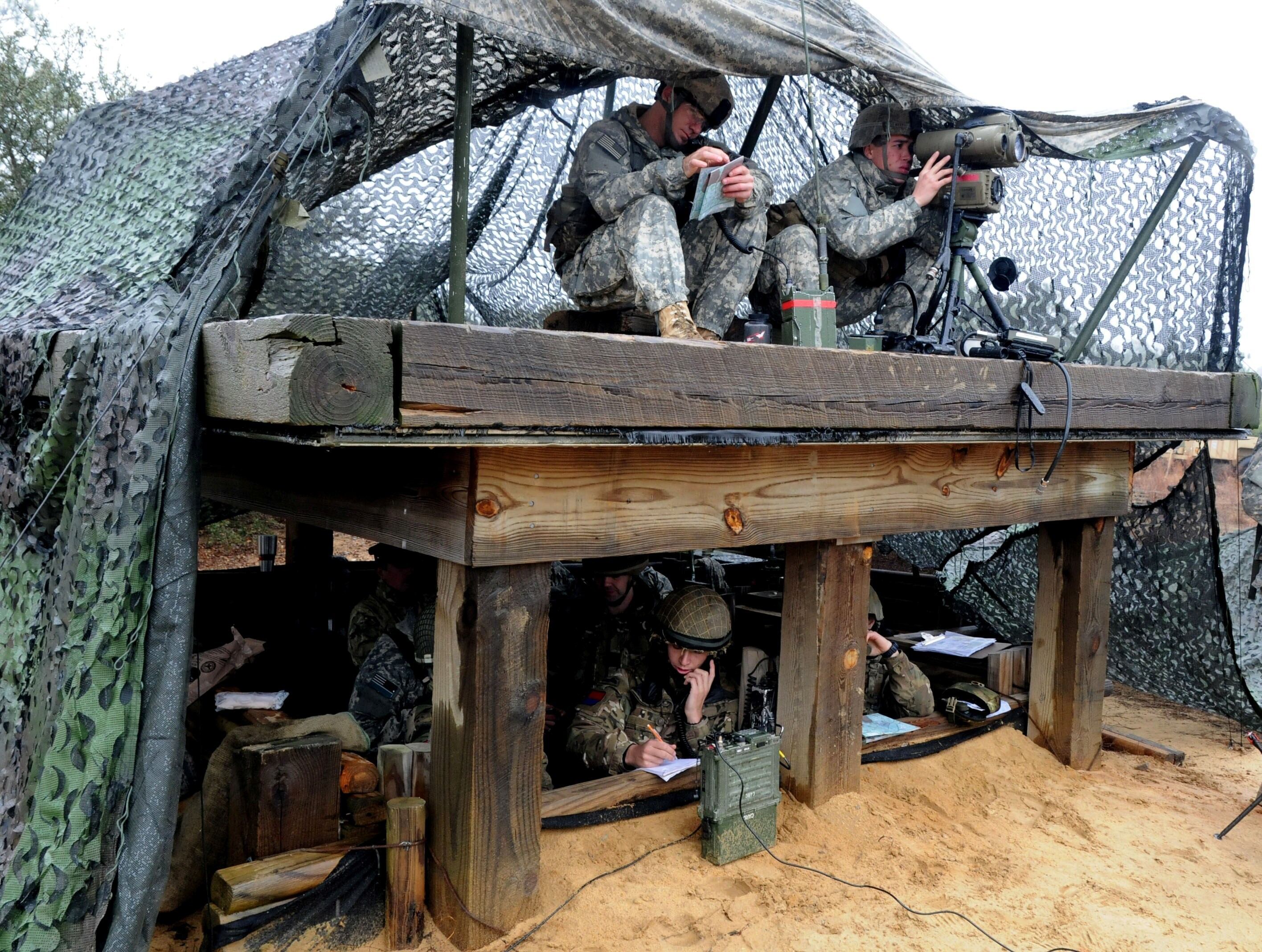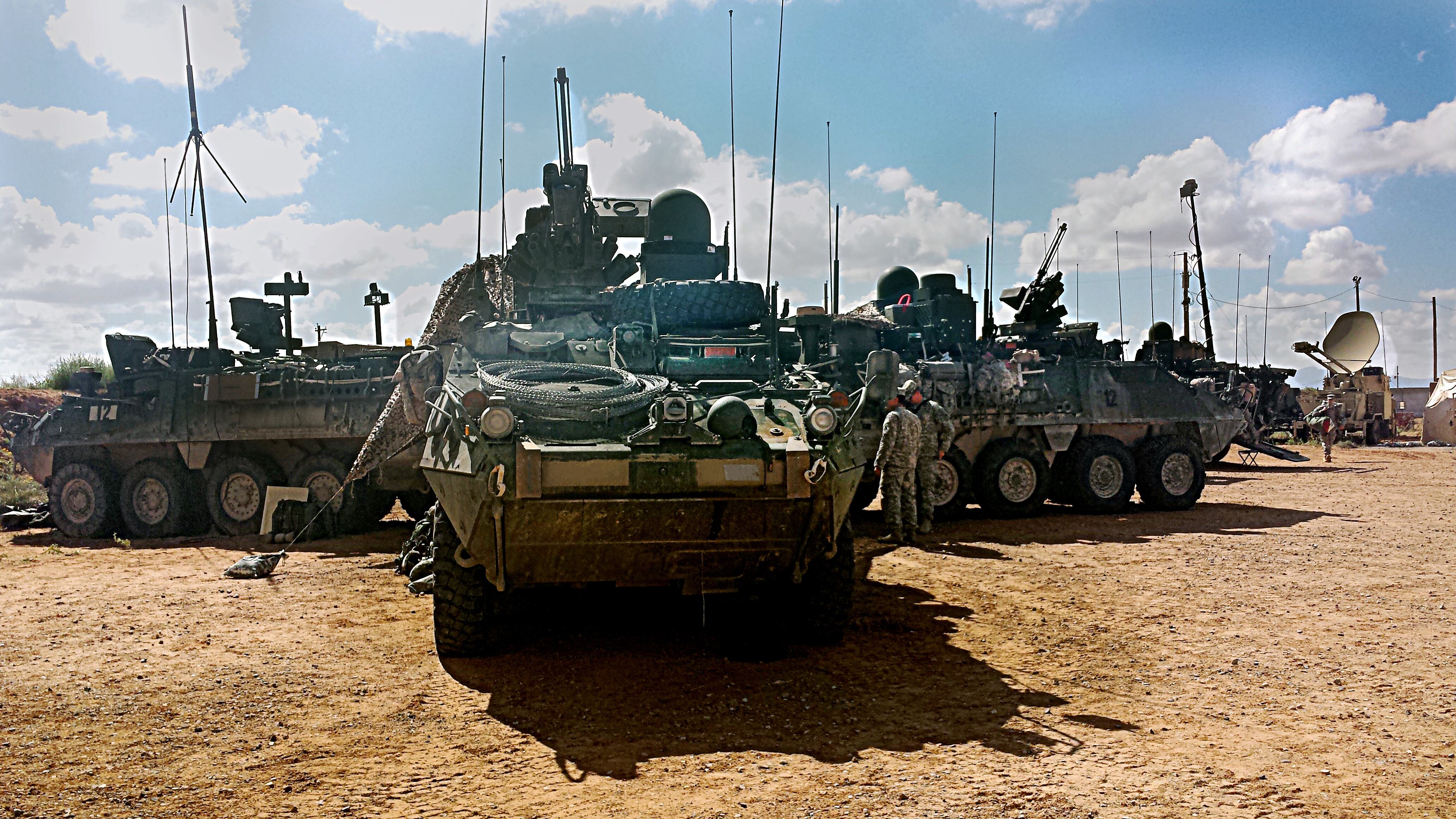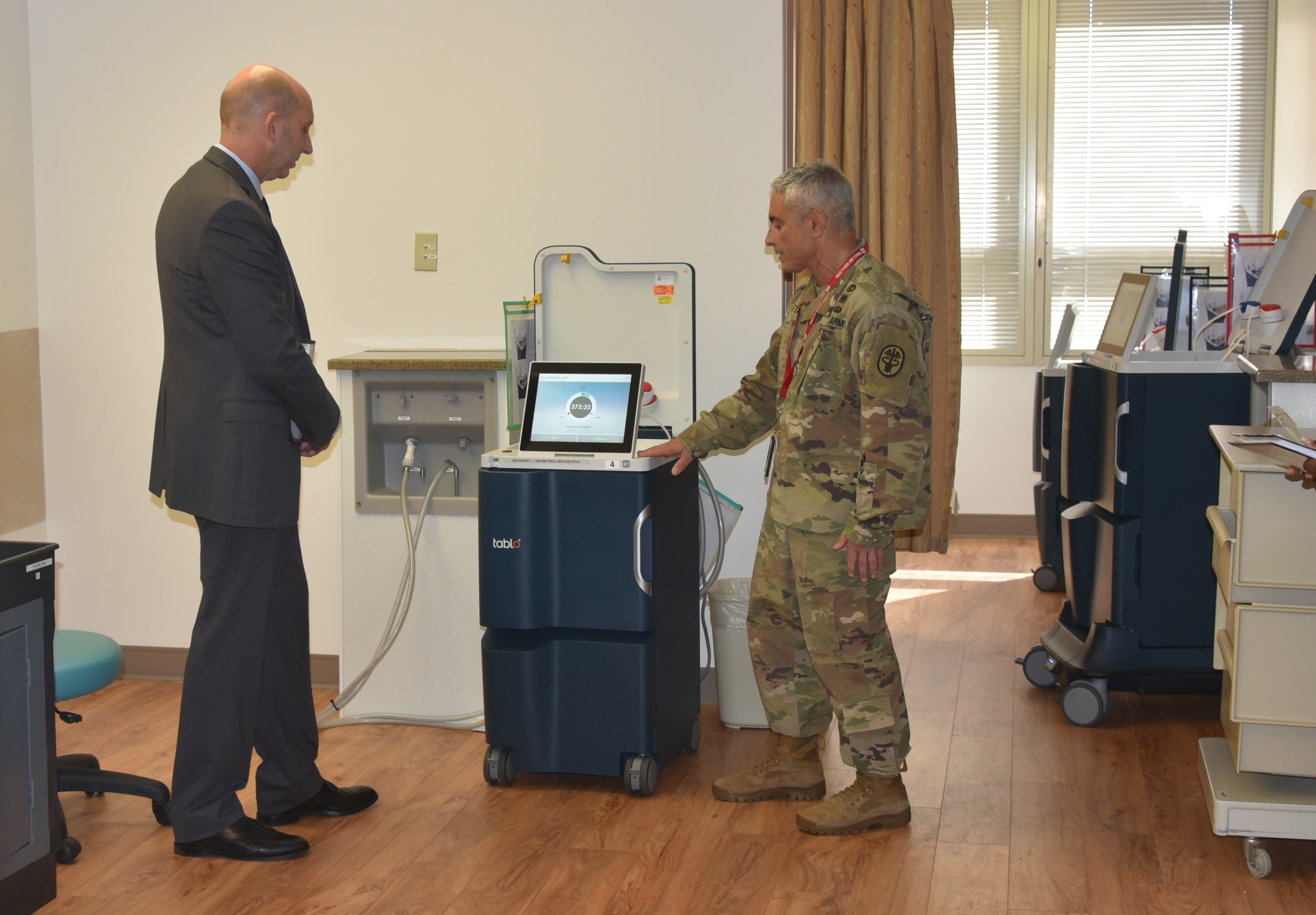The Army is reorganizing 20 brigade combat teams and inactivating six others this year as it pushes to complete a sweeping — and accelerated — reorganization.
The moves come as the Army has soldiers deployed to Afghanistan, Iraq, Europe, West Africa and numerous other places around the world, and the service braces for even deeper end-strength and budget cuts.
"We're navigating a few storms. We're an Army that is currently in a significant drawdown," said Army Vice Chief of Staff Gen. Daniel Allyn. "And while we are drawing down, while we are meeting increasing demands around the globe, we are also reorganizing our Army for the future."
The Army must continue adapting to its environment, Allyn said.
"We've done it throughout this war," he said. "We've reorganized several times over the course of this war to meet the emerging demands, and we are already thinking about how our force must operate in the future."

Members of 2nd Brigade Combat Team, 82nd Airborne Division, with troops from the U.K. practice call for fire techniques at Fort Bragg, N.C.
Photo Credit: Capt. Joseph Bush/Army
In 2013, the Army announced it would cut 11 BCTs and reorganize the rest as it cut 80,000 soldiers to reach an end-strength of 490,000 soldiers. The process was supposed to take four years, but, under pressure from increasing budget cuts, the service compressed the reorganization into two years.
It marks one of the Army's largest organizational changes since World War II, affecting hundreds of units and thousands of soldiers across the force.
It will be completed by Sept. 30, the end of fiscal year 2015, before the possible return of sequestration in fiscal 2016.
Last year, the Army inactivated five BCTs, with six more to go this year. It also reorganized 12 BCTs last year, with 20 on tap this year.
"That is going to be some extraordinarily heavy lifting, particularly for our commanders in our tactical units," Allyn said.
When the Army inactivates a Stryker brigade, for example, it has to process more than 40,000 pieces of equipment, Allyn said. Most of that work is done at the company level, he said.
"Our smallest units bear an extraordinary burden when we deactivate," he said. "Likewise, when we reactivate, tens of thousands of pieces of property is transitioned. It is not a small undertaking."
Last year, the Army reorganized 12 BCTs. Most of those were in the same geographic locations, Allyn said.
For example, the Army last year was able to inactivate 4th BCT, 82nd Airborne Division, and restructure the division's remaining three BCTs all on Fort Bragg, North Carolina.
"Many of the reorganizations that we will do this year will involve moving people and equipment from one installation to another," Allyn said. "Obviously, this is just piling turbulence and change and actions at a time when we really could use predictability, stability and a clearer understanding of the future."
One of his greatest concerns, Allyn said, is the possible return of sequestration in 2016.
If the automatic budget cuts are triggered — a more than $6 billion cut from the $127 billion requested by the Army in its 2016 budget — the last 18 months of "hard work" to increase the Army's readiness will be lost, Allyn said.
In that time, the Army went from just 10 percent of its BCTs being ready to deploy to more than 30 percent of them ready to deploy, he said.
"That work will be sacrificed by a law that just does not make sense for a military force that is preparing for not only known but unknown challenges around the globe," he said.
The Army's reorganization will leave the service with 32 brigade combat teams and an end-strength of 490,000 at the end of this fiscal year.
Of the 32 remaining brigade combat teams, the infantry and armored BCTs stationed in the United States each will receive a third maneuver battalion. The infantry and armored BCTs stationed outside the U.S. — three in all — will remain at two maneuver battalions for now.
The Army's Stryker brigades already each have three maneuver battalions.

In addition, all the BCTs — stateside and abroad — will receive additional engineer and fires capabilities.
Infantry and Stryker BCTs now have one engineer company, while armored BCTs have two.
Under the reorganization, the brigade support troops battalion in each BCT will be converted into a brigade engineer battalion with gap-crossing, breaching and route clearance assets.
This grows the number of engineers in each brigade from about 120 in the infantry and Stryker BCTs and about 200 in the armored BCTs to more than 300 engineers in all.
The infantry and armored brigades also will gain increased fires capability by going from a 2-by-8-gun fires battalion to a 3-by-6. This gives the brigades two additional howitzers and one additional battery to support the three maneuver battalions.
In the infantry BCTs, one battery will be equipped with 155mm Howitzers, providing it with precision fires capability, according to information from the Army.
The Stryker brigades retain the 3-by-6 design.
Cuts roll on
Even after all this work is done this year, the Army is slated to continue cutting the force.
In its 2016 budget request, released Feb. 2, the Army is budgeting for an active-duty end-strength of 475,000.
The eventual goal will be to reach an end-strength of 450,000.
If sequestration returns next year, the Army will be forced to cut another 70,000 active-duty soldiers, for an end-strength of 420,000, and an additional 10 to 12 brigade combat teams, Army Chief of Staff Gen. Ray Odierno wrote in his prepared statement for a Jan. 28 Senate Armed Services Committee hearing on the impact of sequestration.
The Army also will have to reduce modernization and readiness levels over the next five years, and cut 35,000 soldiers from the Army National Guard and another 10,000 from the Army Reserve, Odierno wrote in his statement.

When the Army inactivates a Stryker brigade, for example, it has to process more than 40,000 pieces of equipment.
Photo Credit: Army
Details and decisions on which BCTs might be cut in the future remain up in the air, said Maj. Gen. Gary Cheek, the assistant deputy chief of staff for operations (G-3/5/7).
"We will always strive to meet any demand from a combatant commander," Cheek said. "That is our culture, and I think one of the things that is apparent as you look at things happening around the world is that the Army is out there. We are actively accomplishing these missions for our combatant commanders."
This gives the impression that "everything is fine, that there are no impacts to the Army," Cheek said.
In reality, the Army's capacity gets smaller as its size gets smaller, he said.
"If demands stay the same or get greater, it will be a larger portion of the Army that it takes to accomplish those missions, which we will continue to do," Cheek said. "Where you don't see the risk is if we get called for a major contingency that requires a large Army formation to do some type of a ground campaign."
As it is, nine of the Army's 10 division headquarters are deployed or committed, said Maj. Gen. Thomas Horlander, director of the Army budget.
"It is quite a busy, turbulent operational environment that we're in right now, and we do not see it slowing down," he said.
Despite the uncertainty, the Army will continue to respond to known and emerging requirements with well-led and well-trained soldiers, Allyn said.
"Our soldiers, our Army, our families, have done everything that has been asked of them in an environment that is as unstable and unpredictable as any time, certainly, in my three-plus decades of service," he said.
Michelle Tan is the editor of Army Times and Air Force Times. She has covered the military for Military Times since 2005, and has embedded with U.S. troops in Iraq, Afghanistan, Kuwait, Haiti, Gabon and the Horn of Africa.





